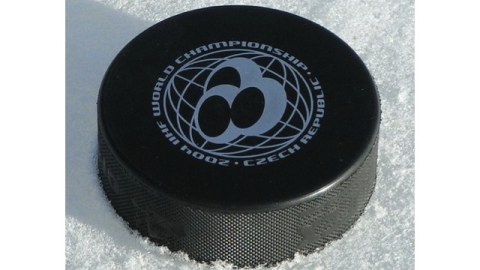Study: Want to Look Aggressive? Wear Black

Psychology is rich in findings that emerge from complex statistics done on the behavior of college students behaving for money or course credit. It’s fair to wonder, then, how well those findings relate to the real world: Maybe a result is peculiar to undergrads, or maybe it’s a subtle effect that never matters in real life. If a lab finds a link between aggression and black-colored clothing, it could be that on the street that effect is dwarfed by more important causes, like body size or testosterone levels. Part of the coolness of this study is that it’s invulnerable to such doubts. The authors found professionals judged men in black-colored clothes to be more aggressive, and men in white were seen as less so. But these weren’t students: They were professional hockey players.
As the paper, in the current issue of Social Psychological and Personality Science, explains, NHL teams all have white jerseys and at least one other, in the team color. And over the past 25 years, teams have changed their colors fairly often. Authors Gregory D. Webster, Geoffrey R. Urland and Joshua Correll saw that this amounted to a natural experiment on the connection between clothing color and aggression.
So they collected penalty statistics on more than 52,000 National Hockey League games between 1984 and 2010, yielding a database of infractions imposed by referees for everything from elbowing and “high-sticking” (2 minutes in the penalty box) to stabbing an opponent with a stick (10 minutes in the box and ejection from the current game and the next one). Then they correlated this data (nearly two years’ worth of penalty minutes) with each team’s history of uniform changes.
Results: On average, the 30 teams were penalized more for aggression during seasons in which their regular uniform was black (the researchers counted as black any jersey where that color was at least half of the shirt). Moreover, the “black uniform effect” did not hold for “bench minor” infractions, in which players are penalized for errors. It was confined to non-bench-minor infractions, which are issued specifically for being aggressive to another player.
In the 2003-2004 season, the NHL switched its policy so that teams at home games, who had worn white, would now wear their team colors. This permitted Webster et al. to test a second hypothesis: That white clothing is associated with lower levels of aggression, as black is with greater. By comparing home games to away games, the authors found that teams were assessed significantly more penalties for aggression when they wore colored jerseys than when they wore white.
So does this mean that wearing black can make you more aggressive? Not necessarily. As Webster et al. point out, their method can’t separate changes in behavior among players from changes in perception among referees. It could be that wearing black makes others see you as aggressive, and that those penalties were imposed because the refs were quicker to act against players in black. Moreover, as they note, it’s not a certainty that heavier penalties for a team mean that each individual member is being more aggressive.
All in all, it’s a cool paper—not least because the effect it discusses can’t be dismissed as an artifact of the lab.
Webster, G., Urland, G., & Correll, J. (2011). Can Uniform Color Color Aggression? Quasi-Experimental Evidence From Professional Ice Hockey Social Psychological and Personality Science, 3 (3), 274-281 DOI: 10.1177/1948550611418535





